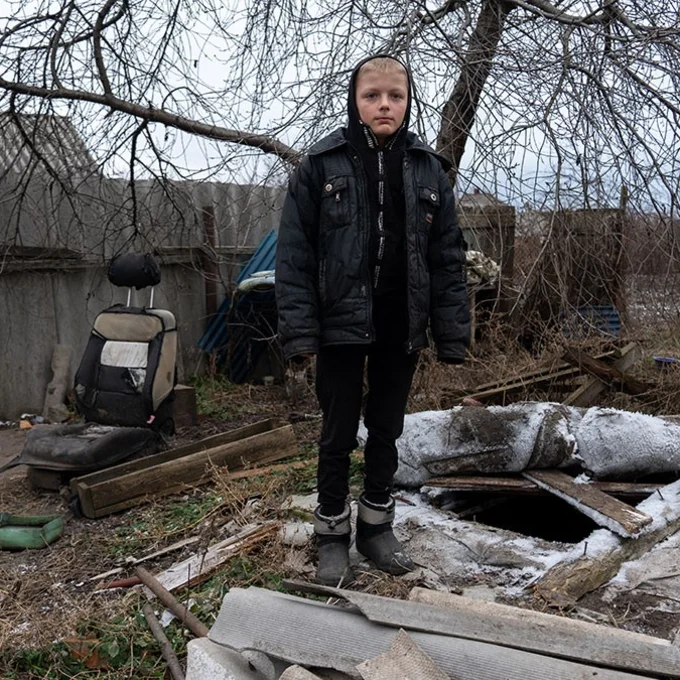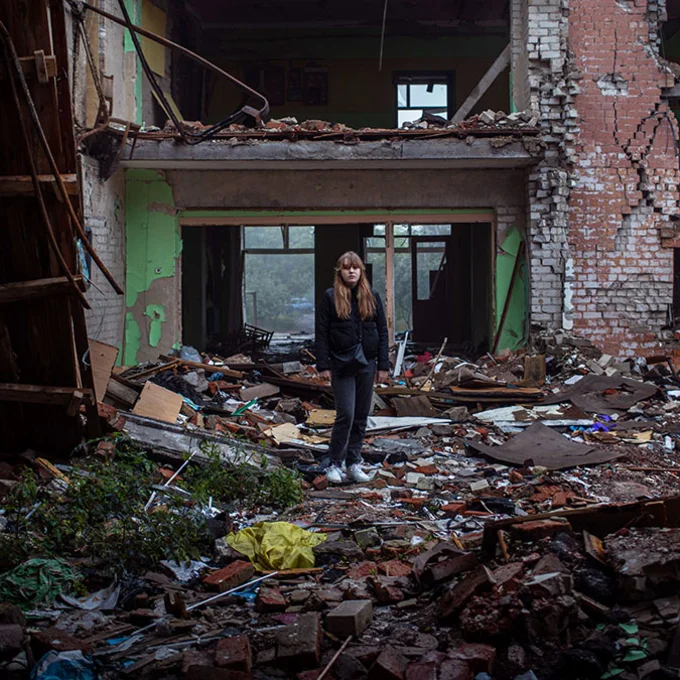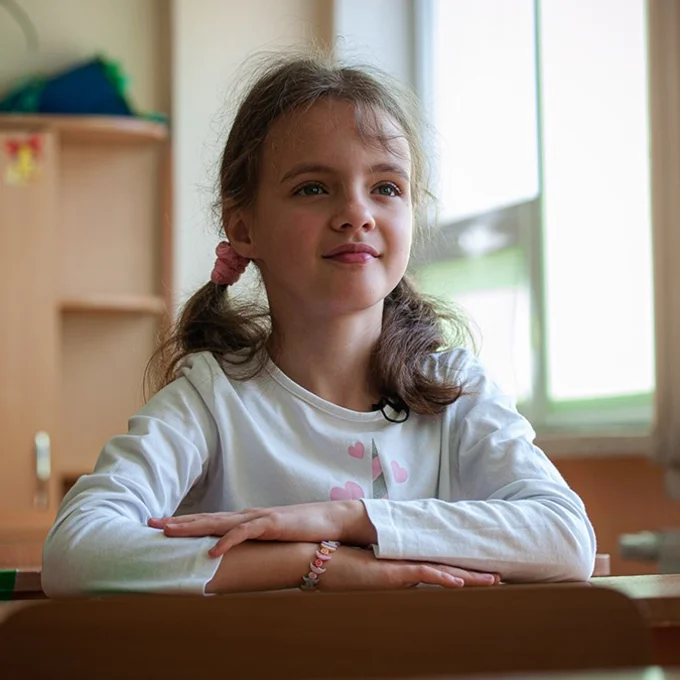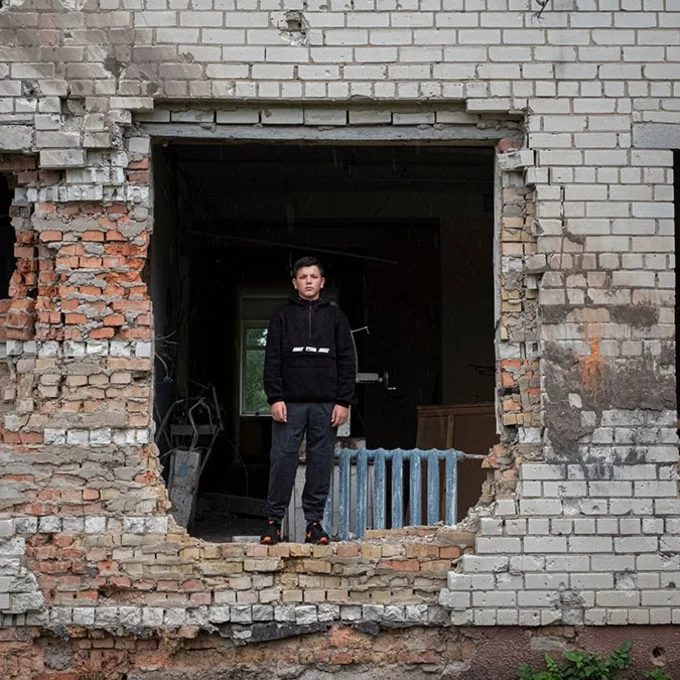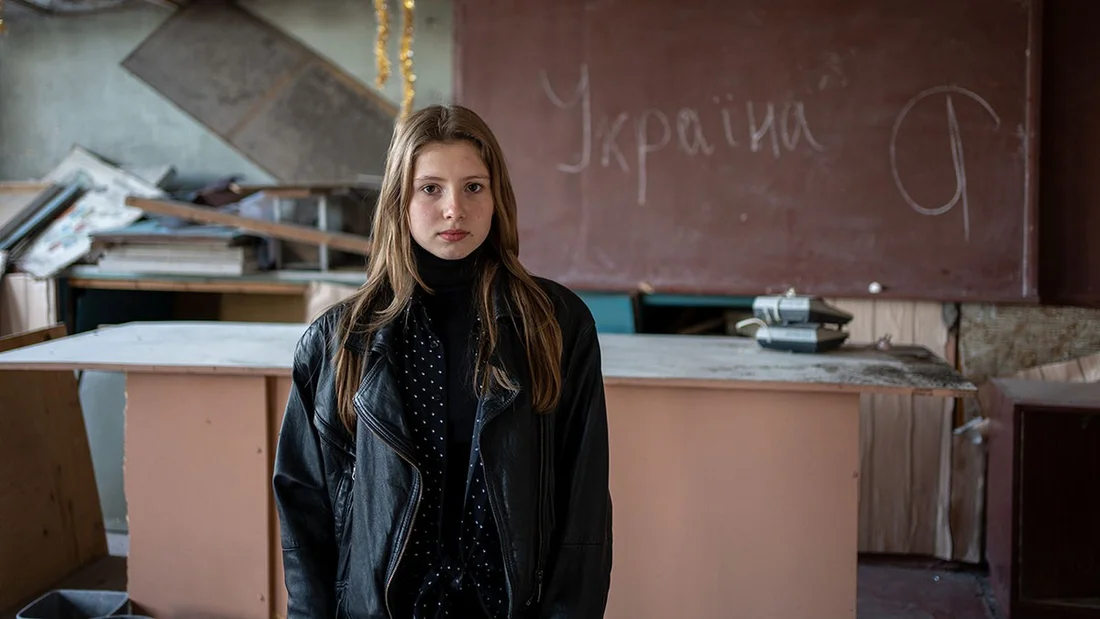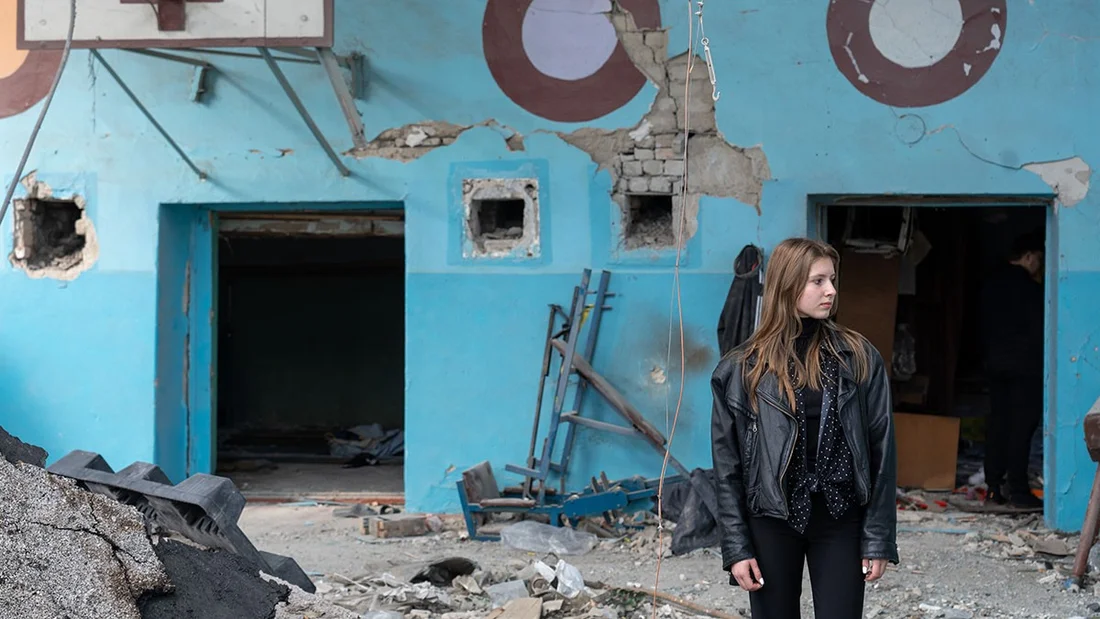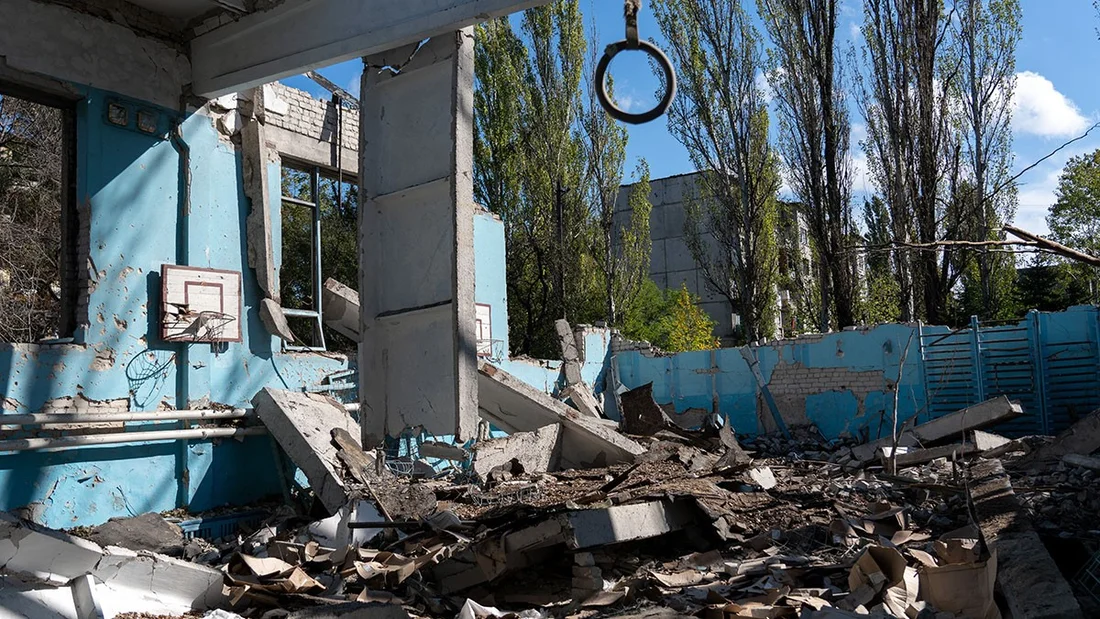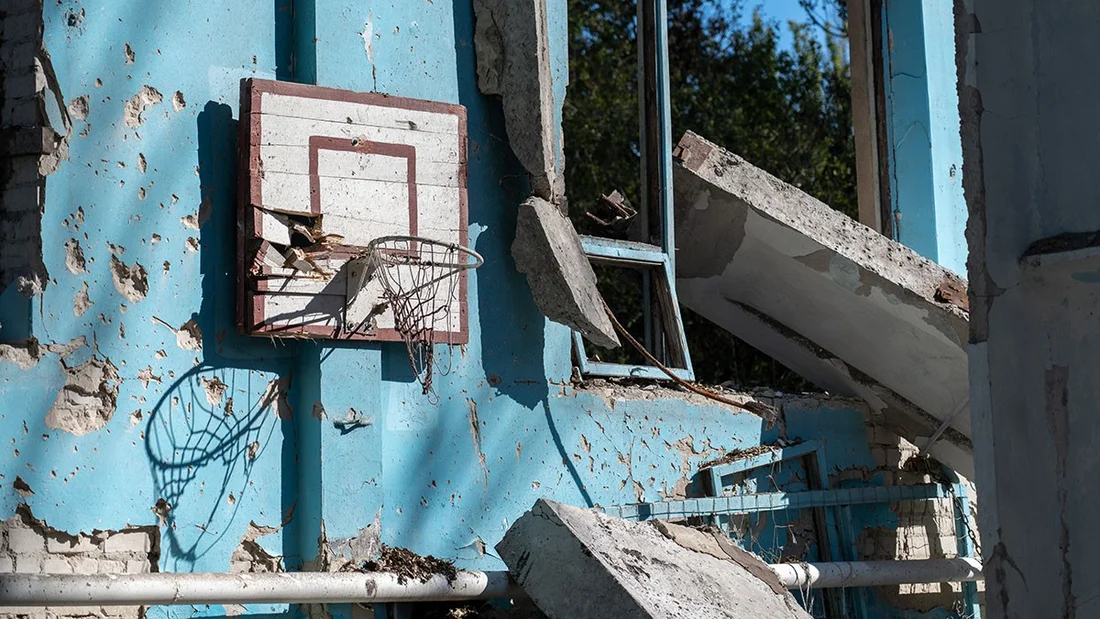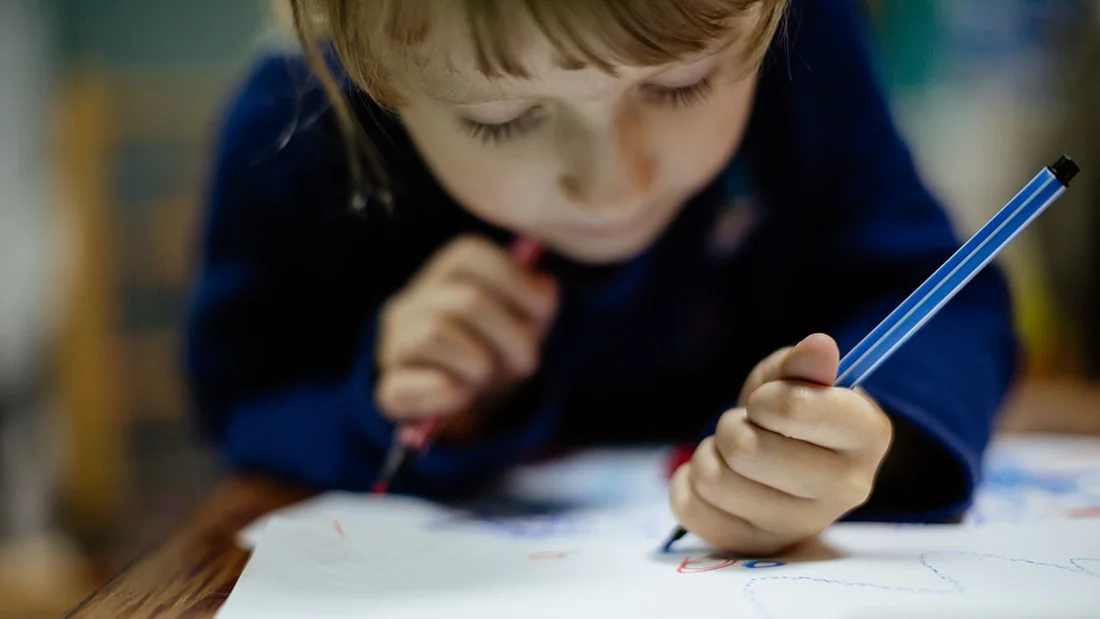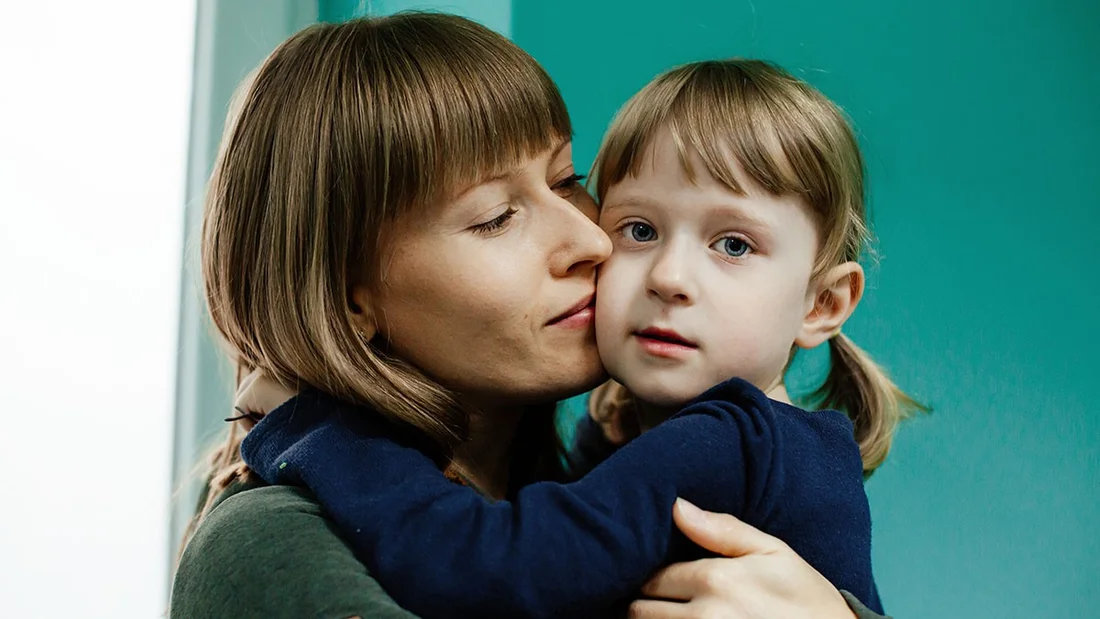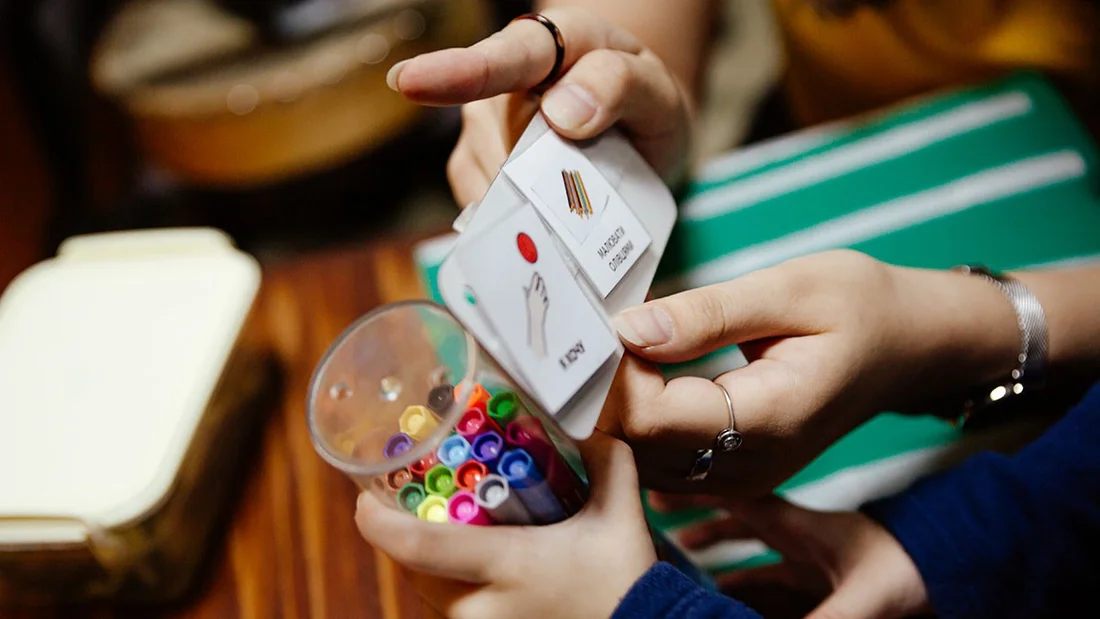On February 24, 2022, the years of conflict between Russia and Ukraine escalated into a war that now had almost the entire country in its grip. Read this blog to find out what this means for children and families in Ukraine, and how UNICEF is helping thanks to generous donations.
The world ended for Daryna a year ago. The 16-year-old from the eastern Ukrainian city of Selydove has already been living with war for nine years, but what she has had to experience since February 24, 2022, has ended her childhood in an instant. For her, the worst thing is that her school was completely destroyed in an explosion. “This place was my second home. I was here even more often than at home. And all of a sudden, this all just disappeared”, says the teenager sadly. She says it feels as though the missiles not only destroyed her school, but also all her childhood memories.
For the past year, an uncertain life shaped by war, such as Daryna is experiencing, has been the sad reality for the majority of the Ukrainian population. 17.7 million people in Ukraine, including 3.3 million children, are currently dependent on humanitarian aid. 5.9 million people have been internally displaced. A further 7.9 million people have left the country since the outbreak of the war. Over the past year, 1,148 children in Ukraine have been killed or injured as a result of the war. 1.5 million children have mental health problems as a result of the fighting. An estimated 5.7 million children have had their education disrupted.* These are the hard facts.
Amid all this darkness, however, there are also rays of hope. Theona’s story is one of them. The four-year-old suffers from an autism spectrum disorder. She and her parents had to flee from their home in the Kherson region to Lviv as a result of the war. Once there, the family made contact with the specialists at the children’s center, which is run as part of a UNICEF project. At the center, she is learning to communicate through the Picture Exchange Communication System (PECS) method, which uses a set of pictures to explain her feelings. “Communication is getting better, as well as her mood”, says Theona’s mother.
Theona’s story is just one of the many examples of how UNICEF has been able to help thanks to the generous support of its donors.
How UNICEF’s aid is used
Since the outbreak of war on February 24, 2022, both the public and in particular the private sector have demonstrated an unprecedented willingness to donate. UNICEF received 87 percent of its US$987 million funding ask in donations in 2022. To enable it to use the donations rapidly and in the right place, UNICEF developed a strategy whereby humanitarian aid in the country was divided into zones.
Zone 1 covers the south-east of the country, particularly the regions near the front line, where access is repeatedly restricted. UNICEF is working with other UN agencies to deploy mobile crisis response teams and humanitarian convoys in this zone, engaging communities, regional and local governments, and civil society partners to implement its aid. Relief supplies such as medicines, water and food to support children, women and other vulnerable people, including displaced persons, are also held there in store. Fifty percent of UNICEF’s current supplies are stored in Zone 1. New branches were opened in Odessa, Poltava and Kharkiv, and more staff were deployed to these parts of the country. UNICEF has also been providing winter relief since September 2022, distributing winter packages and equipping hospitals with heating, heat pumps and heating materials. Heavy shelling in many areas has damaged homes and key energy infrastructure, resulting in frequent power outages throughout the country. This means that the people in Ukraine not only spend periods without light and heating, but also have limited access to water. Fuel is also scarce.
Zone 2 covers the central and western parts of the country, where gaining access to the population is relatively easy. In this zone, UNICEF uses the existing national infrastructure and engages local authorities (at the regional and local level) and civil society organizations to deliver its humanitarian aid.
Since the escalation of the war in February 2022, the number of UNICEF staff in Ukraine has increased from 91 to 241, with 33 percent of staff working in the various regional offices. A further 140 staff are due to be added over the coming months.
The outbreak of war also triggered the biggest refugee crisis since the Second World War. Within the first two weeks after the war began, more than two million people fled across the borders of Ukraine. This figure has since grown to eight million registered refugees within Europe (as of: February 2023).
As an initial response, UNICEF immediately increased its presence in neighboring countries in order to provide refugee families with basic necessities. Contact points, known as Blue Dots, were set up along the escape routes for refugee children and their families. At these Blue Dots, UNICEF is creating child-friendly spaces where girls and boys can relax and play. Trained staff help children come to terms with their experiences and traumas, and also look after refugees who are unaccompanied minors. Mothers of small children can retreat to protected rooms, for example to breastfeed and change diapers. Parents can obtain information about other support services at the Blue Dots. Families can also obtain relief supplies such as hygiene items and blankets.
What your help has achieved so far
In Ukraine
Since the outbreak of the war, UNICEF has helped provide primary medical care for around 5 million children and women. In 2022, UNICEF supported more than 1,000 health facilities in 24 regions of the country, supplying medical aid kits and medical equipment such as ventilators, anesthesia devices, sterilizers, defibrillators, ultrasound devices, incubators, patient monitors, oxygen concentrators, ECG recorders and generators. To improve access to health care, UNICEF provided 15 ambulances to 8 oblasts (regions) in Ukraine. In addition, four facilities in pediatric and maternity clinics in the Lviv region were rebuilt to ensure adequate conditions for safe inpatient treatment of children and pregnant women. More than 402,000 people, including 204,000 children, in 22 oblasts benefited from UNICEF-led medical home visits. This allowed thousands of households to receive high-quality medical care without having to travel long distances through war zones. UNICEF also delivered vaccines to protect against diseases including polio, hepatitis B, tetanus and COVID-19. It also ensured that the cold chain remained intact.
More than 5.5 million people were provided with clean water. Water and sewage networks were repaired, equipment such as pipes and pumps were delivered, and water treatment chemicals were provided. UNICEF also provided clean water in health and educational facilities. Around 1.7 million people were supplied with items such as hygiene products, water containers and water treatment tablets.
More than 3.3 million children and caregivers were reached with psychosocial support services, and around 1.5 million children with educational services. UNICEF focused on creating safe spaces for children in schools, and on ensuring continuity of learning by renovating schools, distributing teaching and learning materials, raising awareness of safety measures and providing textbooks. UNICEF also further expanded the online teaching program established during the COVID-19 pandemic.
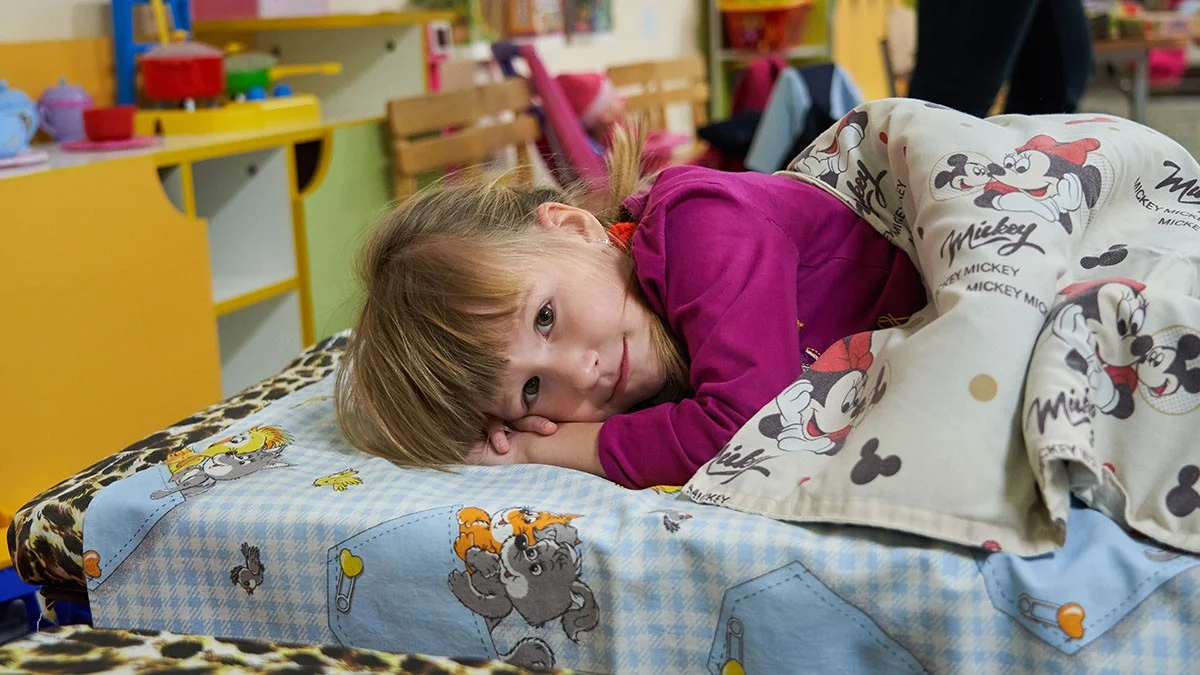
Thanks to the construction of a bespoke shelter, the 112 children in this kindergarten can once again enjoy their lunch break in peace. They previously had to hide behind a wall if the air-raid siren sounded. Now their sleep is no longer disturbed.
To enable children to continue attending schools and kindergartens, where they can engage in social interaction and be safe, UNICEF is working with partner organizations to rebuild shelters and schools in the most seriously affected areas. UNICEF is also providing the necessary supplies and materials for various activities, along with items to ensure the children are comfortable in the shelters.
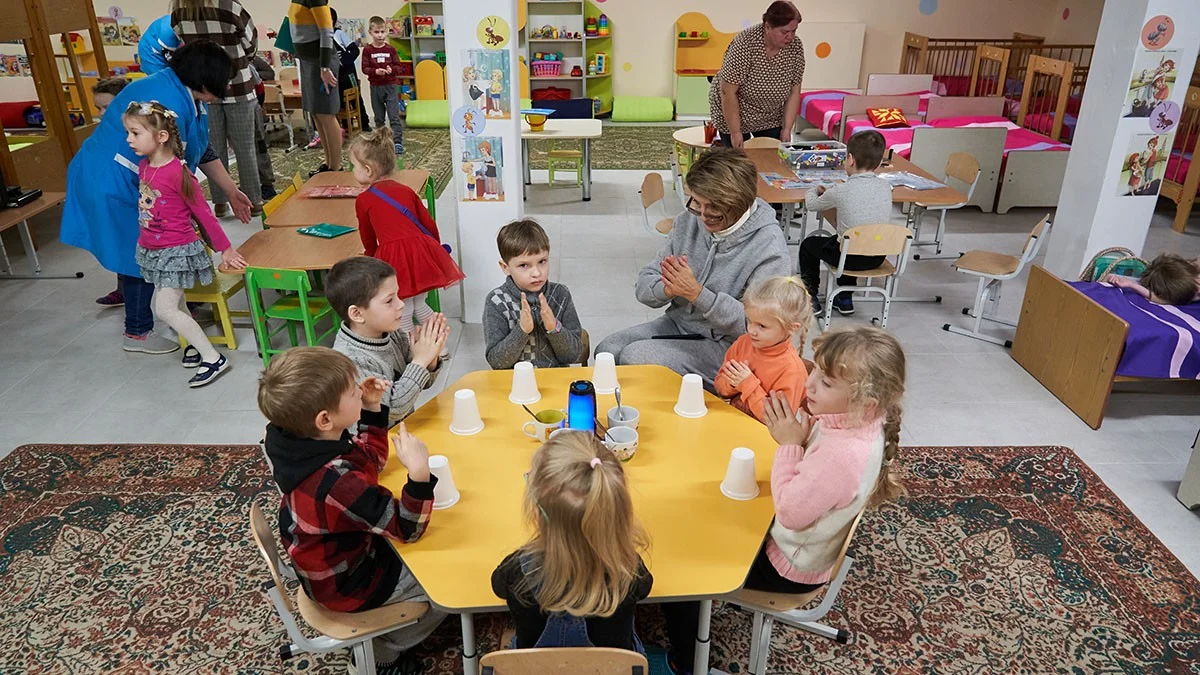
Over 220,000 households received cash assistance from UNICEF to help families meet basic needs such as food and warmth. The unconditional cash assistance enabled families to use the money according to their specific needs.
In neighboring countries hosting refugees
UNICEF is supporting programs and relief measures for Ukrainian refugees in 19 countries, including Poland, Moldova, Romania, Bulgaria, Hungary, Czech Republic, Belarus, Bosnia and Herzegovina, Croatia, Greece, Italy, Montenegro, Serbia, Slovakia and Turkey.
This has enabled UNICEF to provide urgently needed protection for refugees, for example in Blue Dot shelters, help more than 470,000 women and children receive basic medical care, and provide around 115,000 people with clean drinking water. More than a million displaced children were granted access to education, including early childhood education, and around 55,000 households were supported with cash assistance. More than 1.2 million children and guardians were granted access to psychosocial support. More than 10.5 million people were reached by UNICEF’s crisis communication. UNICEF entered into 54 partnerships with national and subnational authorities to further develop social services for refugees.
How UNICEF will continue to provide support
UNICEF will continue to make every effort to help the people of Ukraine in 2023. We will maintain and expand our aid in areas including protection, the delivery of life-saving aid, the provision of basic services, measures to improve the capacity of social services, preparations for further displacement, and support for government systems.
UNICEF will focus on areas where the need is greatest and where the conflict is still ongoing, deploying emergency relief teams and humanitarian convoys, carrying out contingency planning, building up stockpiles of key emergency supplies, and working with local administrations and civil society partners. In more accessible areas, national systems, communities and civil society organizations will be involved in activities, providing short-term emergency assistance whilst also including long-term development and peacebuilding measures.
In host countries, UNICEF will provide country-specific humanitarian services and supplies, make it even easier for refugees to access critical services and education, continue to run Blue Dot shelters and provide cash assistance.
UNICEF will remain active on the ground, providing direct assistance to the people who need our help. Our work is not yet done. If you would like to (continue) support us in this work, then we are grateful for every contribution.
